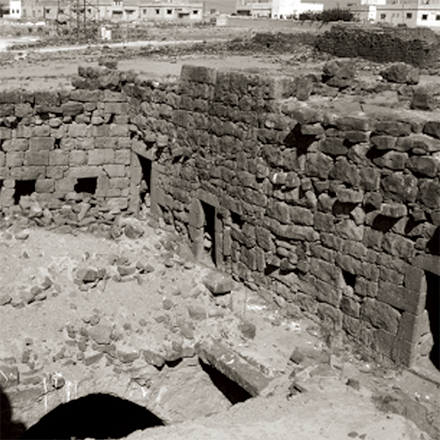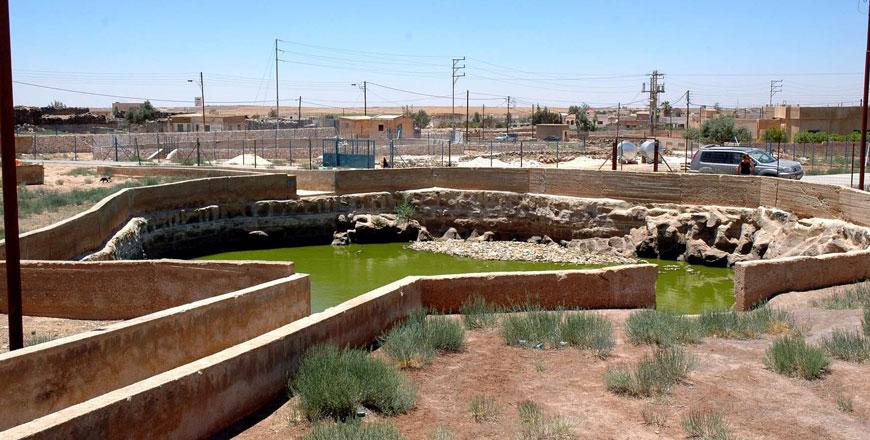You are here
Italian scholar looks to north Jordan village for insights into ancient architecture
By Saeb Rawashdeh - Nov 07,2019 - Last updated at Nov 07,2019

A photograph taken in 1909 of the Church of Saints Sergius and Bacchus at Umm Al Surab (Photo courtesy of ACTECH Project)
AMMAN — The village of Umm Al Surab is considered a good case study for ancient architecture, said an Italian scholar on Tuesday during a lecture titled “Umm Al Surab: Landscape and History of a Settlement in Jordanian Hawran”.
The village Umm Al Surab, some 80 kilometres north of Amman, is found in southern Hawran, a homogeneous geological zone characterised by the presence of basalt stone and currently divided between Jordan and Syria, said Piero Gilento, who holds a PhD from the University of Siena in Italy.
Despite the fact that the site is classified in historiography as a village, scholars recently tried to change that notion since it has “complex and uncharacteristic” features for a village at that time.
“The area was on the Via Trajana road, which connected major cities in Greco-Roman times,” Gilento said.
The aim of the lecture, held at the French Cultural Centre in Jabal Luweibdeh, was to outline the historical evolution and settlement patterns of the site, he stated, adding that the study of building techniques, combined with dating of mortar samples, has offered a “more precise” chronology of some architectural complexes, providing data for new reflections on the transition period between Late Antiquity and the Islamic Era.
The mission from the University of Siena made a preliminary visit to the site in 2008, when a survey was performed on the façade of the Church of Saints Sergius and Bacchus, the expert said, adding that during the 2009 season, they conducted an organised scientific survey focusing on architecture at the site.
“In the archaeological excavations we found pieces from several periods, in particular the Ayyubid-Mamluk period [12th and 13th centuries],” he said, adding that the research team currently works with pottery from that time.
The focus of current study is analysing both the village and the surroundings through a cross-examination of data from the architectural analysis of Roman, Byzantine and Early Islamic buildings, as well as the pottery collected during field survey and archaeological excavations, Gilento explained.
“We found three arches from the Byzantine period,” he said.
The synthesis and interpretation of all this information creates a “complex picture” of the evolution of a settlement in the Jordanian basaltic area improving the knowledge of the history of the Hawrān area, Gilento concluded.
Related Articles
AMMAN — Remains of ancient houses and funerary inscriptions from the Roman period have been found in Dafyana, a site located in southern Haw
AMMAN — The northeast of Jordan is home of number of ancient cities and villages from the Late Roman and Byzantine period, which served as a
AMMAN — The northeastern part of Jordan is one of the most overlooked regions in terms of touristic offers across the country, despite the e

















